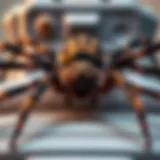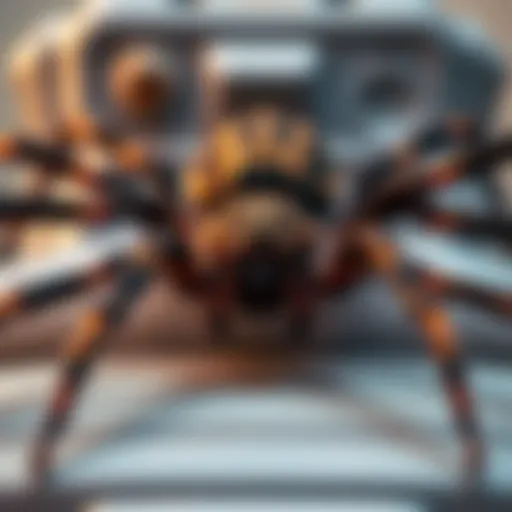Effective Bait Solutions for Ant Control at Home
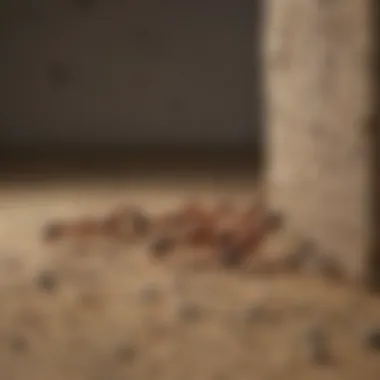
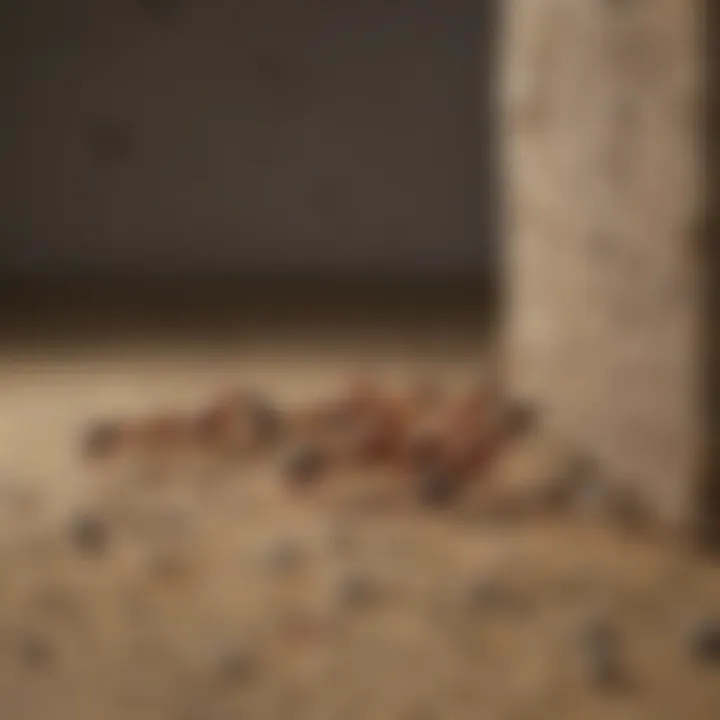
Intro
Ant infestations in homes can be frustrating for homeowners and housewives alike. Understanding the effective bait solutions is key to managing these troublesome pests. This guide provides a detailed overview of ant identification, prevention strategies, and treatment options tailored specifically to residential environments.
Recognizing ant species and understanding their behaviors will enhance the effectiveness of baiting techniques. Additionally, preventive measures can significantly reduce the chance of infestations. Moreover, knowing when to utilize chemical vs. natural treatments ensures a safe home environment.
In this article, we will cover:
- Ant species and identification
- Signs of an infestation
- Home maintenance tips for prevention
- Effective treatment methods
By the end of this guide, homeowners will gain a comprehensive grasp of how to combat ant infestations effectively through the use of baits and other strategies.
Understanding Ant Behavior
Understanding the behavior of ants is crucial when addressing infestations in homes. Such knowledge aids homeowners in recognizing the patterns and characteristics that define various ant species. This understanding can lead to more effective bait solution strategies for managing and ultimately eradicating these pests. Various factors such as the ant's social structure and communication methods play significant roles in their foraging behaviors. Grasping this information does not only assist in choosing the right bait but also informs where to place them effectively. Considerations about their biology enhance successful interventions against infestations.
Ant Species Commonly Found in Homes
Several ant species frequently invade homes, each with distinct habits and preferences. The most common include the Argentine ant, known for its aggressive foraging and ability to form supercolonies; the Carpenter ant, which can cause structural damage; and the Pharaoh ant, often found in warm environments. Recognizing these species is essential as their dietary needs and behaviors differ, thereby influencing the choice of bait.
For instance, the Argentine ant is attracted to sweet substances, making sugar-based baits effective. Conversely, the Carpenter ant prefers proteins, hence, a protein-based bait might yield better results. Furthermore, understanding their foraging habits aids in determining peak activity times when bait should be deployed.
Social Structure and Roles
Ants possess a highly organized social structure. They operate in colonies consisting of workers, soldiers, and reproductive members. The workers are tasked with foraging, nest-building, and caring for the brood. Soldiers protect the colony, while the queen focuses on reproduction. This division of labor is vital for survival and efficiency within the colony.
The communication among ants primarily occurs through pheromones. These chemical signals guide the foraging behavior and recruitment of other ants to food sources. Understanding this social dynamic allows homeowners to anticipate how quickly bait will be detected and consumed. Placement of bait should consider areas frequented by worker ants, enhancing the likelihood of successful traps.
"Ants exhibit complex behaviors that prompt strategic placement of bait solutions for effective control."
Overall, recognizing ant species and their societal interaction helps homeowners select suitable bait solutions that address specific infestations effectively.
Identifying Ant Infestations
Identifying ant infestations is a crucial step in effective pest management within the home. Recognizing the signs of an ant problem early can prevent larger infestations and the potential damage they can cause. This section will detail the common indicators of ant presence and the usual entry points that ants exploit to invade residential spaces.
Signs of Ant Presence
Detecting the signs of ants can vary, but there are key indicators homeowners should observe. One primary sign is the visible trail of ants, which often appears as a line of workers marching along a consistent path. These trails usually lead to food sources or the nest. Another important sign is the presence of their small, often discarded, body parts near feeding areas or nests.
An additional element to look for is the presence of ant nests. They can be found in various locations such as near windows, beneath kitchen appliances, or within wall voids. If you see small piles of soil, this may indicate a nest is nearby. Finally, homeowners should be aware of ant pheromones, which are chemicals released by ants to signal other ants about food sources. This can often result in a sudden increase in activity around a particular area.
By understanding these signs, homeowners can take swift action to control the infestation before it escalates.
Common Entry Points
Ants are notorious for finding their way into homes through various entry points. Common entry points include cracks in foundations or walls, gaps around doors and windows, and openings around utility lines. Some ants can even invade homes through slightly opened doors or through vents.
In particular, the kitchen is a favorite target, largely due to easy access to food sources. It is therefore recommended to periodically inspect areas such as cabinets, under sinks, and near trash cans.
To effectively combat ant infestations, homeowners should seal any identified entry points. This might involve applying caulk or other sealants to gaps and holes. Regular maintenance checks can help identify new entry points as they appear, allowing for early intervention.
"Preventive measures are more effective than reactive strategies when dealing with pests."
Bait Types for Ant Control
Understanding the various bait types for ant control is fundamental to mitigating ant infestations effectively. Each type of bait serves a unique purpose and can be more or less effective, depending on the species of ant and the specific circumstances of the infestation. Utilizing the proper bait type can significantly enhance control measures in a household, making it essential for homeowners to recognize their options. Here, we explore sugar-based baits, protein-based baits, and delve into the comparison of granular and liquid baits, offering insights into their respective benefits and considerations.


Sugar-Based Baits
Sugar-based baits are widely regarded as highly effective when targeting sweet-hungry ant species, like the sugar ant and the Argentine ant. These baits typically contain a mixture of sugar and a toxicant, designed to lure ants into consuming it. The ants take the bait back to their colony, sharing it with other members, which helps to eliminate a larger portion of the population.
- Effectiveness: This bait is particularly effective during the warm months when ants actively seek sugary substances.
- Considerations: Homeowners must ensure that these baits are placed strategically near ant trails or entry points. Failure to do so may result in less effective control.
The combination of an appealing taste and the delayed action of the poison lets worker ants return to the nest before succumbing to the toxic effects, ensuring a broader impact on the colony.
Protein-Based Baits
Protein-based baits are tailored for ant species that prefer protein over sugar, such as the carpenter ant and fire ant. These baits include substances like meat and fish derivatives, appealing to those ants that forage for protein-rich food sources.
- Target Species: Using protein-based baits is essential in addressing infestations involving species that do not respond to sugar-based options.
- Benefits: Similar to sugar-based baits, these also utilize a toxicant that ants distribute within their colony, leading to a coordinated decline in population.
Understanding ant dietary needs and preferences is crucial for successful bait application, thus selecting the appropriate bait based on your targeted species enhances the situation significantly.
Granular vs. Liquid Baits
Both granular and liquid baits have their unique advantages, and the choice between them largely depends on individual household situations and preferences.
- Granular Baits: These baits come in dry form and are typically scattered in areas where ants are commonly seen. They are beneficial for outdoor use, especially around foundations and gardens. Granular baits can withstand weather conditions better than their liquid counterparts.
- Liquid Baits: Liquid options are often more attractive to ants due to their easy-to-consume nature. They are placed in bait stations that prevent spillage and reduce the risk of non-target animals consuming the bait. However, they can evaporate or become ineffective quicker in open outdoor environments.
Choosing the correct bait type enhances the likelihood of resolving ant infestations promptly, rendering both granular and liquid selections valuable in an effective pest control strategy.
Effectiveness of Ant Baits
The effectiveness of ant baits is a crucial element when dealing with ant infestations in homes. Understanding how these baits work can guide homeowners in selecting the best options for their specific needs. The primary advantage of ant baits lies in their ability to target ant colonies at their source. This systematic approach to pest control allows for a more thorough and lasting solution compared to other methods, such as sprays or traps that only address surface-level problems. When applied properly, ant baits can significantly reduce, if not eliminate, the presence of ants over time.
How Baiting Works
Baiting is based on the principle of attracting ants to a tempting food source that contains an insecticide. Unlike repellent methods that scare ants away, baits lure ants into consuming a substance that will ultimately kill them. The efficiency of this method rests on a few important mechanisms:
- Attraction: Ants are drawn to the bait due to its appealing scent or taste. This is important as different species of ants have various preferences for food types.
- Foraging Behavior: Worker ants will carry the bait back to their colony. This behavior ensures the poison is shared with other ants, including the queen. Eliminating the queen is vital for long-term population control.
- Delayed Action: Many ant baits work by having a delayed effect. The ant consumes the bait and may not die immediately, allowing it time to return to the nest and infect others.
By understanding these dynamics, homeowners can more effectively implement baiting as a form of ant control.
Comparing Different Bait Types
When it comes to choosing the right bait, it’s essential to account for the diverse options available. Different bait types can have different effectiveness depending on the species of ant and the specific situation you are facing. Here are some factors to consider:
- Sugar-Based Baits: These are excellent for sweet-loving ants such as Carpenter or Pavement ants. Sugar provides an immediate food source that entices ants easily.
- Protein-Based Baits: This type generally works well for ants that primarily feed on proteins, like Odorous House Ants. If you notice these types of ants, protein-based options might be more effective.
- Granular vs. Liquid Baits: Granular baits are often used outdoors as they resist rain and remain effective over time. In contrast, liquid baits may be preferred indoors due to their ability to be readily accessed by ants in tight spaces.
The End
Choosing an effective bait means considering the ants' behavior and preferences. By understanding the effectiveness of baiting methods and the distinctions between various bait types, homeowners can take a more targeted approach to controlling ant infestations.
"The best defense against ant infestations is understanding their behavior and using targeted bait solutions effectively."
By applying this knowledge and employing the appropriate baiting strategies, one can significantly improve the chances of successful ant management in their home.
Guidelines for Using Ant Baits
Baiting is often a central strategy in managing ant infestations. To maximize the effectiveness of ant baits, certain guidelines must be followed. Understanding these guidelines is essential for homeowners who wish to achieve optimal results.
Following these strategies aids in targeting the ant colonies efficiently while minimizing unnecessary exposure to the environment and inhabitants. Establishing proper baiting techniques ensures the attraction and consumption of the bait by the ants, ultimately aiding in their control.
Placement of Baits
Placement of ant baits is critical. Proper location can significantly affect how well they work. Here are some points to consider when placing baits:
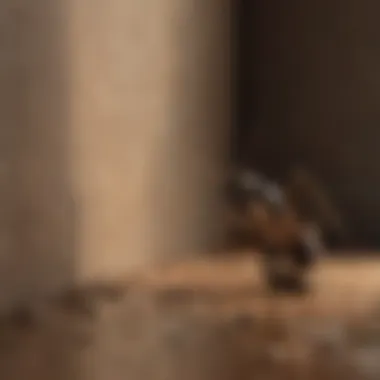
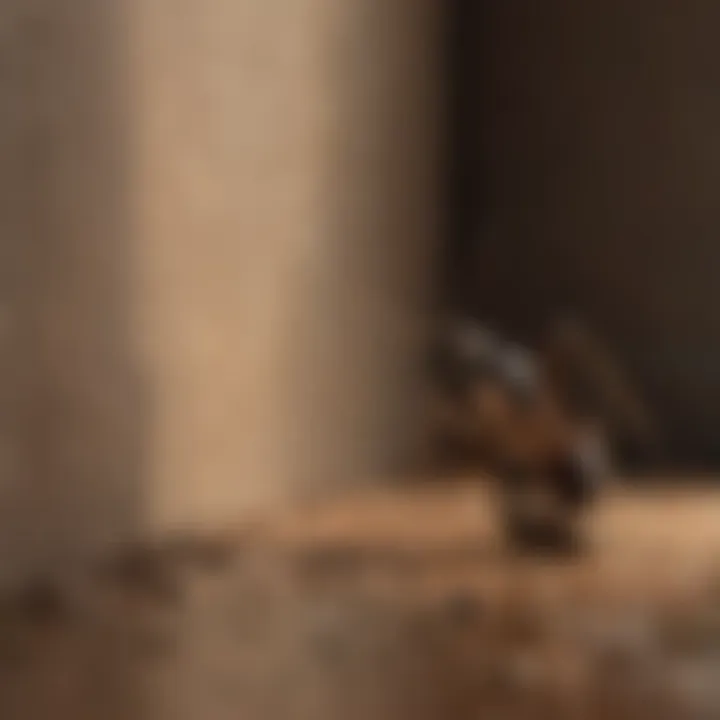
- Identify Trails: Observe where ants travel. Usually, ants follow pheromone trails, which can lead directly to food sources or nesting sites.
- Near Entry Points: Place baits close to suspected entry points like cracks, crevices, or gaps. This increases the likelihood that ants will find the bait and take it back to the colony.
- Avoid Disturbance: Do not place baits in areas that are frequently disturbed. If people or pets disrupt the bait, ants may be deterred from approaching it.
- Difficult Access Areas: Consider placing baits in tricky spots where ants have been seen, like behind appliances or under sinks.
Proper placement of baits makes them more effective and increases the likelihood of ant elimination.
Timing of Application
The timing of bait application also matters. Ants are more active at certain times, which affects how effective the bait will be. Passive strategies enhance bait effectiveness through these considerations:
- Early Morning or Late Evening: Ants typically forage during these times. Applying baits when ants are active will increase the chances of them taking the bait.
- Before Ant Colonies Expand: If ants are spotted in small numbers, it is better to place baits as soon as possible. Early intervention prevents larger infestations from developing.
- Consistent Monitoring: Regularly check bait stations to assess how much bait is taken by the ants. If baits are consumed quickly, it might indicate a larger ant problem that needs addressing.
- Weather Conditions Matter: Ant activity can be affected by weather. If it is rainy or very hot, adjust your baiting strategy accordingly. Ants may be less active during harsh conditions.
Understanding these guidelines will position homeowners to combat ant infestations more intelligently. Following them can lead to a much healthier home environment.
Safety Considerations
Safety considerations are crucial when deploying ant baits in homes. Using these baits effectively can greatly reduce ant infestations. However, mismanagement of these products can lead to unintended consequences. Therefore, understanding how to safely use, store, and dispose of ant baits is paramount. This section covers important elements that ensure the safety of both pets and humans while applying these solutions.
Preventing Exposure to Pets
Households with pets must take extra cautions with ant baits. Many ant baits contain substances that can be harmful if ingested. Even if the bait is designed to attract ants, curious pets can become a problem. To prevent exposure, it is essential to:
- Choose pet-safe baits whenever possible. Some brands formulate their products with pet safety in mind.
- Place baits out of reach. Choose locations that pets cannot access, such as high shelves or enclosed cabinets.
- Monitor the placement of baits. Regular checks can ensure that the baits remain intact and that pets do not interfere with them.
- Educate family members. Ensure everyone in the household knows the dangers and the locations of placed baits.
Taking these precautions reduces the risk of accidental ingestion by pets. Ensuring a safe environment for both humans and animals should always be a priority.
Storage and Disposal of Ant Baits
Proper storage and disposal of ant baits is also vital. Incorrect handling can lead to accidental exposure or contaminating living spaces. Consider the following guidelines:
- Store baits in their original containers. This preserves important information on usage and safety. Closed containers will also limit unauthorized access.
- Keep them in a cool, dry place. Extreme temperatures or humidity can compromise the effectiveness of the bait.
- Follow disposal instructions. Each bait product comes with specific disposal guidelines. Adhering to these prevents environmental contamination.
- Use caution when discarding. Seal used baits in a bag to prevent accidental exposure during disposal.
By taking care during storage and disposal, you contribute to a safer environment not just for your home but for the surrounding area.
Through effective management of ant baits, homeowners can maintain a safe and pest-free living space. Understanding safety considerations leads to informed decisions while controlling ant populations.
Natural Alternatives to Chemical Baits
In the quest for managing ant infestations within homes, the appeal of natural alternatives to chemical baits has grown significantly. Many homeowners prefer these options due to concerns about the safety and potential toxicity of chemical pesticides, especially with children and pets around. Natural alternatives can provide effective ant control without the harsh effects often associated with synthetic chemicals. Utilizing these methods highlights a more environmentally friendly and holistic approach to pest management.
These alternatives can be equally efficient when applied correctly. They often rely on common household ingredients or natural extracts that ants find unappealing. Additionally, they can serve as a dual-purpose solution, offering the benefits of pest control along with added peace of mind about safety.
It is crucial, however, to recognize that while natural alternatives can be effective, their results may vary when compared to traditional chemical baits. Homeowners must approach these solutions with appropriate expectations. Once these aspects are understood, one can delve deeper into specific natural solutions that suit their needs.
Homemade Bait Solutions
Homemade bait solutions can be a practical and economical choice for ant control. They typically utilize easily accessible ingredients, often found in the kitchen. Here are a few effective recipes:
- Sugar and Water Solution: This simple mixture involves dissolving sugar in warm water. The sugar attracts the ants, while the water provides moisture, which they need. Place small amounts of this solution in shallow containers or bottle caps near ant trails.
- Peanut Butter and Borax Bait: Mixing peanut butter with Borax creates a potent bait. The peanut butter serves as the attractant, while Borax is toxic to ants. Use caution with this mixture if there are pets or small children in the house.
- Vinegar and Water: While vinegar primarily serves as a repellent, its anti-bacterial properties can also disrupt ant trails. A mixture of equal parts vinegar and water can be sprayed in affected areas.
Creating these homemade baits allows homeowners greater control over what is used in their space, making it a more appealing option for many.
Essential Oils and Other Non-Toxic Options
Essential oils have gained reputation as effective non-toxic ant deterrents. These oils come from plants and contain natural compounds known for their pest-repelling properties. Some popular essential oils for ant control include:
- Peppermint Oil: Ants find the strong scent of peppermint overwhelming. Mixing a few drops of peppermint oil with water in a spray bottle can create a barrier against ants.
- Tea Tree Oil: Known for its antiseptic qualities, tea tree oil can also deter ants. A diluted solution sprayed around ant entry points can discourage them from crossing thresholds.
- Cinnamon Oil: This oil disrupts ant pheromone trails, making it an effective option. Sprinkling cinnamon powder or using oil in strategic locations can prevent future infestations.
Utilizing these essential oils can contribute to a healthier home environment, reducing reliance on chemicals while maintaining effective pest management.
"Using natural alternatives not only safeguards your home but also promotes a sustainable lifestyle."


Integrating Ant Baits with Other Control Methods
Ant baits can be an effective strategy for managing ant infestations, but their success is significantly heightened when used alongside other control methods. Combining baits with complementary strategies creates a more robust barrier against these persistent pests. This section focuses on two main integration techniques: combining baits with barrier treatments and maintaining cleanliness to discourage ant presence.
Combining Baits with Barrier Treatments
When it comes to dealing with ants, using baits alone may not yield effective long-term results. Integrating baits with barrier treatments expands the protective net against ant entry and establishes a dual form of attack. Barrier treatments involve applying insecticides or natural repellents in areas where ants commonly enter. This includes exterior walls, entry points, and near potential food sources.
When selecting barrier treatments, consider the following points:
- Location: Apply treatments around windows, doors, and along foundation edges where ants frequently infiltrate.
- Type of Repellents: Choose between chemical or natural options based on preference and safety. For example, diatomaceous earth is a natural choice that works effectively as a barrier without risking toxicity to pets or humans.
- Continuous Monitoring: Regularly inspect your barriers to ensure they remain effective. This may require re-application after rain or as barriers wear down.
By addressing both food attraction through baiting and entry prevention via barriers, homeowners can see tangible improvements in ant management.
Regular Cleaning and Maintenance Practices
The integration of baits should be complemented by regular cleaning and maintenance practices. Ants are primarily motivated by food; therefore, keeping the living spaces clean is crucial.
Here are some practices that help in this regard:
- Immediate Clean-Up: Wipe up spills and crumbs immediately. Ants can sense food sources from a distance, so eliminating food trails is vital.
- Storing Food Properly: Seal food items in airtight containers. This limits access for ants and diminishes the chance they'll establish a colony.
- Routine Inspections: Frequently check common areas, including under appliances and furniture. These spaces often harbor food residues and can become breeding grounds for ants.
Regular maintenance not only reduces the attractiveness of environments but also enhances the effectiveness of bait solutions.
When to Call Professional Pest Control
Ant infestations can quickly become unmanageable, primarily when standard baiting solutions fail to produce results. Homeowners should be mindful of specific indicators that their situation may require expert intervention. Relying on professional services not only addresses immediate concerns but also establishes a long-term strategy to prevent future infestations.
Signs You Need Expert Intervention
Recognizing when to call for professional pest control is crucial. Homeowners should consider seeking help if they notice an increase in activity, particularly if it exceeds initial expectations.
- Large Colonies: If you see lines of ants that seem to grow in number daily, this can indicate a significant infestation.
- Persistent Return: When ants are repeatedly seen even after bait application, it suggests that the methods used may not target the source effectively.
- Different species: If various ant species emerge, like carpenter ants or fire ants, a professional's expertise may be needed. These species have different nesting habits and may require targeted treatments.
- Damaged Property: Signs of damage such as wood shavings, which indicates a nesting site, should prompt immediate contact with a pest control service.
- Health Concerns: If there are concerns about disease transmission, particularly if ants are found in food sources, it is advisable to seek immediate help.
What to Expect from Professional Services
When engaging a pest control service, understanding the process can help manage expectations. These professionals typically follow a structured approach to address infestations.
- Assessment: A thorough inspection is performed to understand the extent of the problem.
- Identification: Identifying the species helps in determining the right treatment plan.
- Customized Treatment Plan: This plan often includes targeted baits, sprays, or dust. Each treatment is chosen based on how pests behave in that specific environment.
- Preventive Measures: Professionals educate homeowners on maintaining a pest-free environment. This may include guidance on sealing entry points or best practices for waste disposal.
- Follow-Up Visits: Scheduling follow-ups is common. These visits are essential for monitoring effectiveness and ensuring all active colonies are addressed.
"Understanding when to call professionals can prevent escalating problems and ensure effective long-term solutions."
By being observant and proactive, homeowners can effectively manage ant infestations and know the right moment to seek professional assistance, which in turn promotes a pest-free living environment.
Preventing Future Ant Infestations
Preventing future ant infestations is a critical topic in pest management. It is not enough to address an active ant problem; homeowners must also consider proactive measures to ensure that such an issue does not recur. The significance of this topic lies in its potential to save time, money, and stress associated with ongoing pest issues. Proper prevention methods can create a barrier against future invasions and promote a healthier living environment.
Sealing Entry Points
One of the primary strategies for preventing ant infestations is sealing entry points. Ants often invade homes through small cracks and crevices. These points can be located around windows, doors, and even foundations. Identifying and sealing these entry points greatly reduces the chances of an ant colony entering the home. Here are some steps to follow:
- Inspect: Conduct thorough inspections of your home’s interior and exterior. Look for any visible cracks, holes, or gaps.
- Seal: Use caulk or other suitable materials to seal identified entry points. Pay special attention to areas around plumbing and electrical lines, as these are common access points for ants.
- Maintain Landscaping: Keep foliage and shrubs trimmed back from the house. This reduces the chances of ants using plants as bridges to your home.
By effectively sealing entry points, homeowners can create a less inviting environment for ants. It is a simple yet essential measure in keeping these pests outside where they belong.
Regular Inspections and Maintenance
Conducting regular inspections and maintenance of your home is equally important. This practice not only keeps your living space looking its best, but it also allows for early detection of pest issues. Ants can establish colonies quickly, so early intervention is key. Here are some essential tips:
- Schedule Inspections: Set a schedule, maybe monthly or quarterly, to inspect your home thoroughly. Look for signs of ant activity, such as trails or nests.
- Check for Moisture: Ants are often attracted to water sources. Ensure there are no leaks in pipes or appliances, and fix any humidity issues.
- Eliminate Food Sources: Store food in airtight containers and regularly clean up spills and crumbs. This minimizes the attractiveness of your home to ants.
Through regular inspections and careful maintenance, homeowners can stay ahead of potential infestations. This proactive approach not only deters ants but also promotes overall household cleanliness and safety.
"Ant prevention is far easier than ant control. Small efforts can yield significant results."
